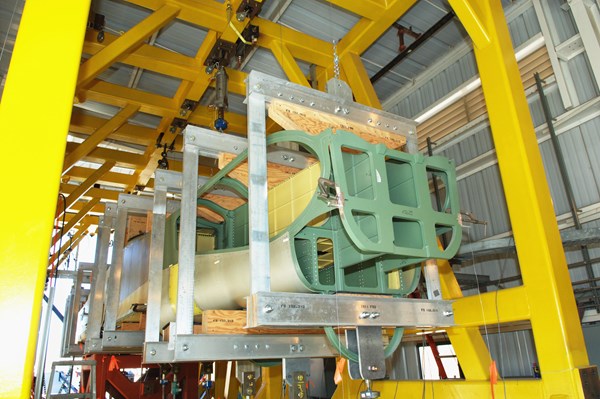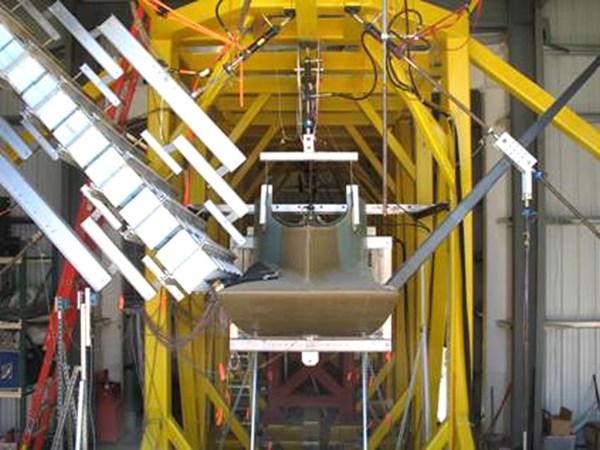SAN DIEGO, April 9, 2007 (PRIME NEWSWIRE) -- Northrop Grumman Corporation (NYSE:NOC) achieved another milestone when it successfully completed three significant fuselage and empennage strength tests of the RQ-4 Block 20 Global Hawk unmanned aerial reconnaissance system. The tests, conducted at subcontractor Innovative Engineering Solutions' facility in Murrieta, Calif., surpassed the U.S. Air Force's stringent strength and safety requirements.
Photos accompanying this release are available at: http://media.primezone.com/noc/.
"The completion of these static fuselage tests marks the Global Hawk team's continued validation of the air vehicle's robust design and structural integrity," said Jerry Madigan, Northrop Grumman vice president of high altitude long endurance systems. "Northrop Grumman has been consistently able to meet desired safety specifications through its advanced design and manufacturing techniques. This effort proves that Global Hawk is the safest, most reliable unmanned air vehicle in the skies today."
During the first test, the Block 20 fuselage successfully reached a 150 percent bending design limit load for the maximum 40-foot per second up gust requirement. This and the subsequent tests exceeded the Air Force's 125 percent requirement by approximately 20 percent.
In the second test conducted a few days later, the Global Hawk's V-tail successfully reached 150 percent design limit load for an oblique 40-foot per second gust. Comprised of a standard stiffness graphite and a toughened epoxy system, the V-tail's skins were bonded to the ribs and spars using a room temperature cured paste adhesive.
The third test consisted of a 150 percent design limit torsional load applied to the aft metallic and composite fuselage, simulating the maximum oblique gusts to the air vehicle. No anomalies or failures were discovered after each test.
In 2006, Northrop Grumman demonstrated no-failure for 125 percent of gust-induced loads and 150 percent of all other ground operational loads. With the completion of these recent tests, the Block 20 Global Hawk fuselage and empennage now has a 150 percent factor of safety for all loads that the air vehicle is expected to see in its lifetime.
"The success of the fuselage load testing demonstrates Northrop Grumman's ability to integrate both metallic and composite structures together," said Randy Brown, Global Hawk Systems Group director with the Air Force's 303rd Aeronautical Systems Group at Wright-Patterson Air Force Base, Ohio. "The excellent results provide confidence in the accuracy of the finite element models as well as in the composite assembly approach."
The accuracy of the finite analysis models and the test data generated will allow changes for future variants, such as the U.S. Navy's Broad Area Maritime Surveillance system, without the expensive cost of structural testing.
The Global Hawk's metallic fuselage is manufactured at the company's Unmanned Systems Center in Moss Point, Miss. The composite components for the fuselage and the V-tails are manufactured at Aurora Flight Sciences' West Virginia facility.
Northrop Grumman's Global Hawk work leverages decades of experience producing advanced tactical fighters and long-range strike aircraft, and integrating systems such as the F-14 Tomcat, F/A-18 Super Hornet, B-2 Spirit and F-35 Lightning II.
Northrop Grumman Corporation is a $30 billion global defense and technology company whose 122,000 employees provide innovative systems, products, and solutions in information and services, electronics, aerospace and shipbuilding to government and commercial customers worldwide.

